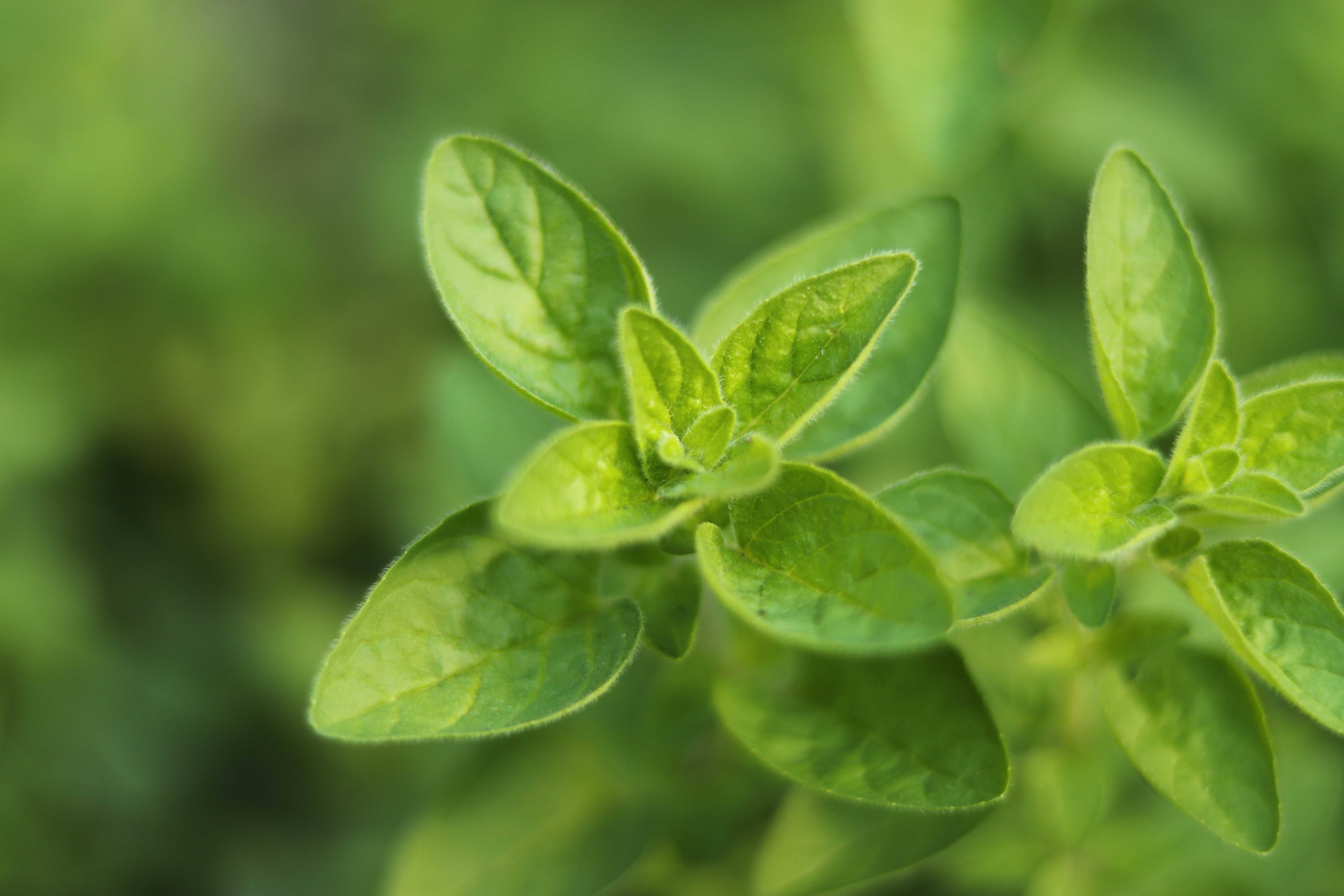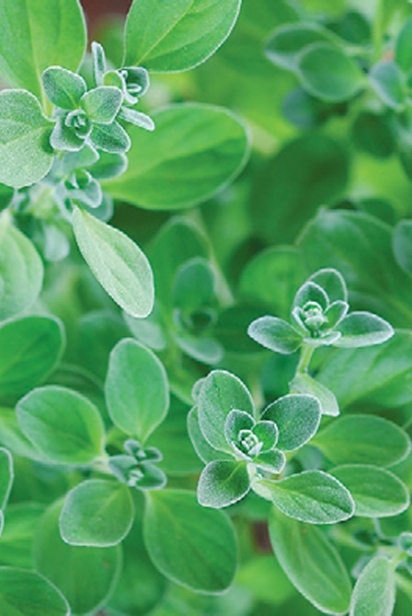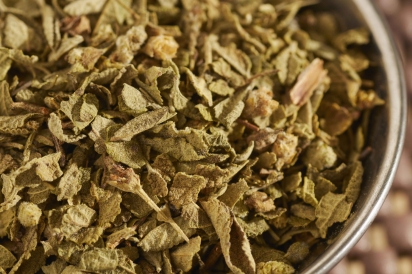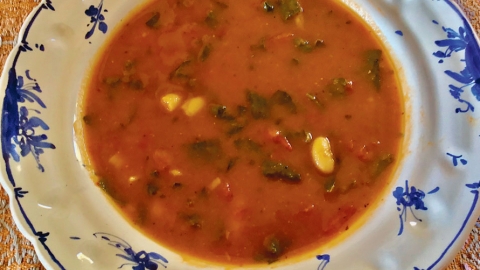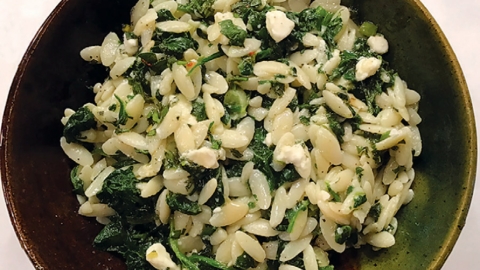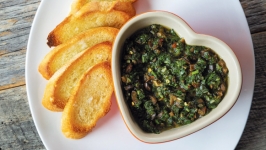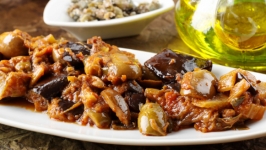A World of Oreganos
In the Greek language the word for oregano, rigani, means “joy of the mountains.” It seems a fitting and poetic name for an herb that has flavored food and provided animal forage, pollinator nectar and medicine to inhabitants of the Mediterranean region for millennia.
Because oregano of any variety provides a pronounced and bold flavor, it tends to be used sparingly in dishes, and not very often on its own. It can be added to many dishes that feature companion herbs when you want to add some zest.
The widespread use of oregano in the U.S. is fairly recent, growing with the popularity of Italian food, especially pizza, after World War II when soldiers returned from Italy. Today, as Mexican food is enjoyed widely, different varieties of oregano are entering the culinary scene.
Between the Old World and the New World there are many varieties of oregano and they belong to different families of plants. It can be confusing! Some botanical research and taste testing has clarified the distinctions:
The European oreganos are all members of the mint family (Lamiacea, or Labiatae), and grow wild in the dry, rugged Mediterranean landscapes of Italy, Spain, Turkey, Greece, North Africa and the Levant.
Origanum vulgare is the name of this common oregano found in Europe, and the most well-known variety in the U.S. It is usually marked as “Mediterranean” or just “oregano.”
Greek oregano comprises two subspecies of Origanum vulgare: Origanum onites and Origanum heracleoticum. Some cooks favor these varieties over O. vulgare as they tend to be stronger in flavor. Wild Greek oregano is exported and should be labeled as such.
A close relative to oregano, also in the mint family, is marjoram, Origanum Majorana. Marjoram has a milder flavor because it lacks the phenolic compounds thymol and carvacrol, which give the other varieties of oregano their pungency. As a seasoning it offers a sweeter, more floral profile compared to the spicier notes of oregano. Use it as a substitute or in combination with O. vulgare.
In the New World, what is called oregano comes from two different plant families. From the verbena (Verbenaceae) family we have Lippia graveolens, often called Mexican oregano. Widely used in Hispanic and Mexican dishes, it is native to Texas, southern New Mexico, Mexico and parts of Central America. While it is definitely similar to Mediterranean oregano, it is stronger, with grassy, tangy notes.
Also in the verbena family is desert oregano (Lippia palmeri or Lippia origanoides). It is native to the arid Sonoran Desert region and wild harvested by the Seri, Yaqui and other desert people. Not readily available in the U.S., it has a distinctive citrus quality and a peppery finish like its cousin L. graveolens.
Indio, or Poliomentha longiflora, is a wild plant of the highlands of Northeastern Mexico, and a member of the mint family. Also sometimes called Mexican oregano, it has a distinctive sharp pungency, somewhat like savory.
All these oreganos are important to the seasoning of authentic Mexican dishes. They are more pungent and earthy than Mediterranean oregano (which does not serve very successfully as a substitute).
In Europe, oregano is usually paired with parsley, marjoram, basil, bay leaf and thyme, or a combination of these herbs. Mediterranean dishes that commonly incorporate oregano or marjoram are strong flavored, including lamb stews, meatballs, eggplant or mushroom dishes, ratatouille, pizza and tomato sauces. It is often used in a marinade for olives or feta cheese cubes or used to season greens such as spinach and Swiss chard.
Pizza seasoned with oregano is classic, combined with tomatoes, olives, basil, or just plain oregano with olive oil and coarse sea salt.
The New World varieties pair well with the strong flavors of chiles, cumin, garlic, cilantro and epazote that flavor so many Southwestern and Mexican dishes.
The Mexican oreganos add deep flavor to hearty beef, pork and wild game dishes and are especially delicious in bean dishes. Along with a sprinkle of lime juice, cilantro, salt and pepper, Mexican oregano also enhances grilled shrimp or fish such as grouper, swordfish or halibut. A popular pickled relish of carrots, jalapeños, onions, garlic, oregano, black pepper, bay leaves, vinegar and sometimes cauliflower is a common condiment on Mexican dinner tables.
A traditional Southwest seasoning combination calls for toasting red chile flakes, cumin seeds and crumbled oregano in a hot skillet very briefly until fragrant, then grinding the mixture to add to beans, chile sauce and stews.
According to Gardenology.org, for oregano the “influence of climate, soil, and season on the composition of the essential oils is greater than the difference between the various species.” The expression of “terroir” is at work here, suggesting the need to taste the oregano at hand before cooking with it.
Oregano is easy to grow, drought tolerant and pest resistant. Its abundant florescence attracts pollinators. Rodale’s Illustrated Encyclopedia of Herbs suggests buying a living plant rather than seeds so that you can taste a leaf before purchase.
Generally, oreganos are dried before use, but when used fresh they round out the flavors of a mix of herbs used for pasta, sauce or soup. They concentrate and hold their flavor well when dried, but they are best used within a year of harvest.
An herb with plenty of character, oregano adds beauty to our gardens and deep flavor to our cooking.
Note on More "Oreganos": Another variety of oregano on this side of the Atlantic is Lippia micromera, which is called “Spanish Thyme” in Puerto Rico. “Cuban oregano” is actually from a plant called Coleus aromaticus, which is neither mint nor verbena family, but shares some of the flavor profile of oregano.


